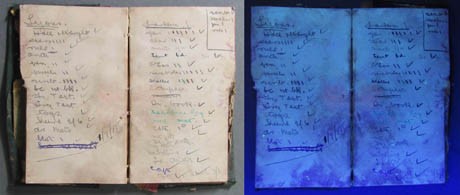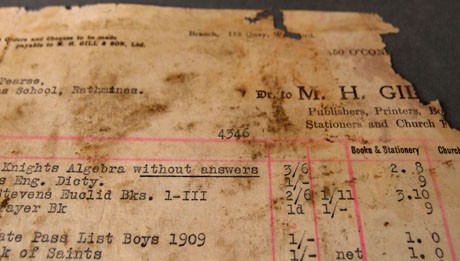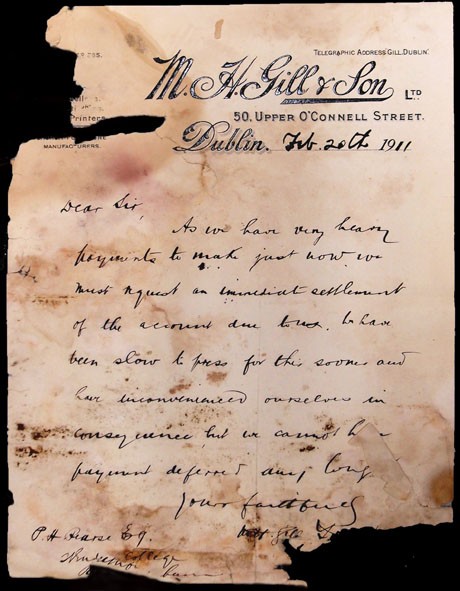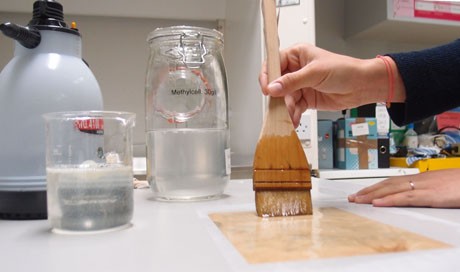Mould can grow on any surface, especially in our wet, damp climate! It's one of the most common and serious causes of damage to our heritage but is largely preventable. NLI conservators often deal with mould on paper and the Patrick Pearse Papers are currently getting some first-aid treatment … Here are some ‘fun facts’ you might not want to know!

Under ultraviolet light mould and inks look different
WHAT IS MOULD?
Mould is a type of fungus; the main body is made up of fine colourless threads called hyphae, which intertwine to make up a tangled web called the mycelium. Fruiting bodies, in which spores are formed, develop on the hyphae ends. The fluff that we can see growing in established colonies is often the tip of the iceberg. In ultraviolet light, mould fluoresces strange and wonderful colours, revealing the full extent of damage to the paper.

Fluffy brown mould on the surface of a document (MS 21093)
HOW DOES MOULD SPREAD AND GROW?
The air around us has billions of dormant mould spores (nice thought eh!). These tiny particles (1-10 micrometres) land on a surface such as organic materials leather, paper, glue, wood and textiles. The spores will germinate at high relative humidity (70-100%) and an optimum temperature of 24-30º Celsius. In order to grow, mould needs oxygen and food sources. Mould can also digest some synthetic materials such as adhesives, pastes and paints.

Mould has stained this document pink, black and orange
HOW IT DAMAGES OUR STUFF?
The Pearse Papers showed the direct damage caused by mould growth. Using enzymes, mould decomposed the cellulose and paper size to extract nutrients. As moulds’ hyphae ruptured the paper structure, the items cannot be handled or read without risk of disintegration. Acidic waste products have made the paper brittle and colouring substances excreted by the mould reduces our ability to read these historic documents. This colour depends on the surface substrate and the age of the colony. It can be any colour of the rainbow!
CONSERVATION OF MOULDY PAPER
Mould can spread easily and it’s best not to breathe-in mould spores. Visible mould growth was removed with a fine brush into a HEPA vacuum cleaner nozzle under a suction hood. The presence of modern fibres and fragile inks meant treatment of the Pearse Papers was problematic. To denature the spores, an alcohol solution was carefully applied to selected items but this can damage inks so its best for such treatment to be undertake by a trained conservator. The most fragile items were washed to remove acids. Then a very thin tissue lining was applied to support the degraded paper and/or methyl-cellulose size is applied to consolidate the papers fibers. Papers unsuitable for washing were repaired using remoistenable tissue techniques.

Methycellulose size applied to strengthen mould damaged papers
Any risk of new growth will be limited by correct storage conditions of low temperature and humidity. These manuscripts document an eventful period in Irish history at the turn of the twentieth century. The conserved material will be scheduled for digitisation next year and will be accessible for national and international audiences via the NLI online Catalogue http://catalogue.nli.ie/.
The Pearse Papers Project is funded by the Heritage Council 
Mould in your collection?
Find out more about how to manage a mould outreach from these free online guides:
Blog written by Gabrielle Vergnoux and Louise O'Connor, NLI Conservators.
